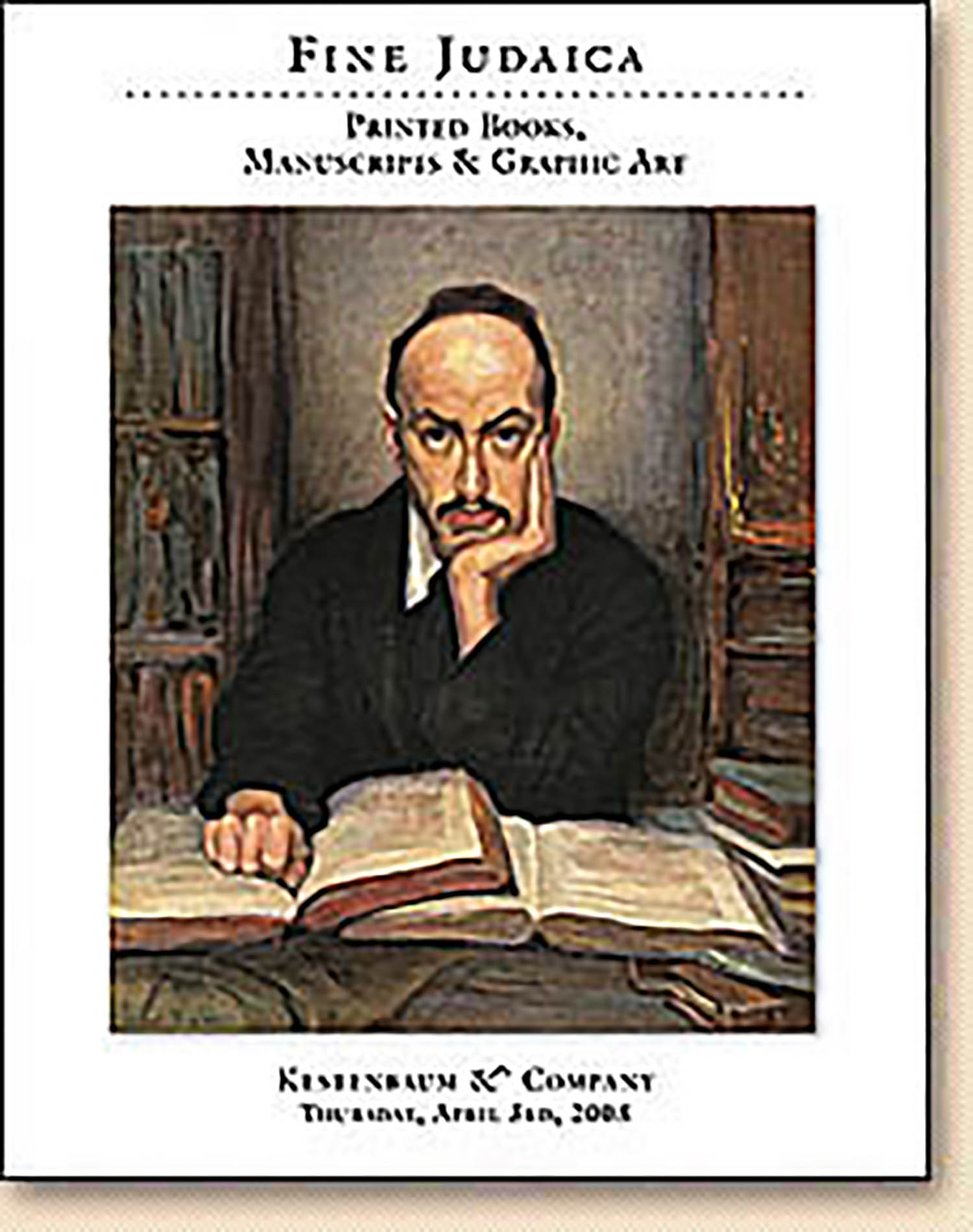(KABBALAH).

AUCTION 39 |
Thursday, April 03rd,
2008 at 1:00
Fine Judaica: Printed Books, Manuscripts, Autograph Letters & Graphic Art
Lot 198
(KABBALAH).
Est: $5,000 - $7,000
PRICE REALIZED $8,000
Two Classics of Christian Kabbalah by the German Philo-semite Johannes Reuchlin.
Johannes Reuchlin (1455-1522) was one of the foremost figures of German humanism and a pioneer of Greek and Hebrew scholarship in Germany. His interest in Kabbalah was aroused by the Italian neoplatonist Pico della Mirandola and by Jacob b. Yechiel Loans (Jewish court physician of Frederick III), who also taught him Hebrew. Like Pico, Reuchlin searched in the Kabbalah for an early, esoteric Christianity. In addition, Reuchlin sensed an affinity between certain elements in Kabbalistic teaching and the basic conceptions of the great German mystic Nicholas of Cusa (Cusanus), whom he deeply admired. It was probably his interest in Kabbalah that was the motivating force behind his defense of Jewish literature against the apostate Johannes Pfefferkorn during the so-called “Battle of the Books,” which raged for the better part of a decade (1510-1520).
Reuchlin's first literary foray into the realm of Kabbalah was De Verbo Mirifico ("The Miracle-Working Word") (Basle, 1494). The book takes the form of a Platonic trialogue between Capnion, a Christian; Sidonius, an epicurean philosopher; and Baruchias, a Jew. In this early work, one observes that Reuchlin's knowledge of Kabbalah is minimal. The emphasis is on the miraculous nature of the Tetragrammaton. Reuchlin's contribution to Christian Kabbalah consists in inserting the letter "Shin" in the center of the four-lettered name, to produce the name of Jesus.
A quarter of a century later, Reuchlin produced De Arte Cabalistica, his mature interpretation of Kabbalistic thought. Once again, a Platonic trialogue is employed, this time between “Simon,” a Jewish Kabbalist; “Marannus,“ a Muslim; and “Philolaus,” a representative of Pythagorean philosophy. By now, Reuchlin's familiarity with authentic Kabbalah has increased dramatically, informed mostly by reading of Joseph Gikatilla's works Sha'arei Orah and Ginath Egoz. One notes also the shift in perspective. Now, it is no longer the Christian Capnion who is the mouthpiece for Reuchlin, but mostly the Jewish Kabbalist Simon. Divided in three parts, the first and third discuss the Kabbalah at considerable length, with a fair amount of sympathy. (The second part contains a long dialogue on Pythagoras’ philosophy.)
Reuchlin's De Arte Cabalistica prompted the anti-Semite Jacob Hoogstraaten’s reply, Destructio Cabale (Cologne, 1519). See EJ, Vols. XIV, cols. 108-111
